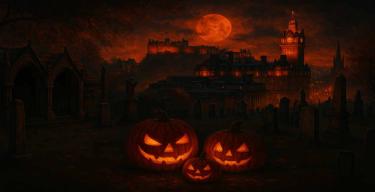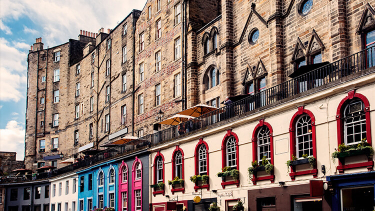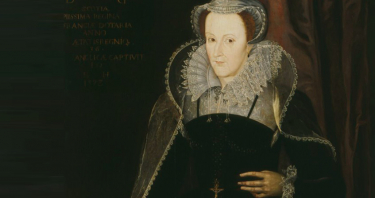“Run, and you’ll live… at least a while. And dying in your beds, many years from now, would you be willin’ to trade ALL the days, from this day to that, for one chance, just one chance, to come back here and tell our enemies that they may take our lives, but they’ll never take… OUR FREEDOM!”.
Mel Gibson in Braveheart
*In this article some details of the plot are revealed
It is difficult to criticise one of the essential films in the history of cinema, winner of 5 Oscars and nominated for another 10, with a script capable of keeping the viewer on edge during the 3 hours, and some sublime performances. During their plot, they make us immediately empathize with the hero William Wallace, fear Edward I and hate the traitor Robert the Bruce, who incidentally is the true Braveheart or “brave heart” of the Scottish chronicles.
Therefore, this article does not want to be a criticism of a product, which, as entertainment, is perfectly fulfilling its mission. Although the historical rigor has been left aside to achieve a better story, we consider that it is something completely legal, as long as when we sit down to watch the film we are able to discern what is true and what is not.
Scottish Reactions: Pros and Cons
It is a film that since its premiere in 1995 has provoked mixed reactions in Scotland. No one doubts that it has put Scotland on the map, causing a worldwide reaction of sympathy towards the country, especially in its eternal fight against the English, who certainly do not stand very well in the film. The benefits for tourism have also been considerable, highlighting places such as Stirling, where you can visit the Wallace monument and where the famous first battle in which he defeated the English took place.
But on the other hand, the story has been directed and performed by an Australian, shot in Ireland (for tax reasons) and adapted to the American taste. To make matters worse, the story of William Wallace does not fit reality in large parts of the film, clouding the image of Robert the Bruce (among others), the true Scottish hero. And this is the version that, like it or not, will remain for most people.
Nationalism in the 13th century?

A first fact to keep in mind, not only in this Braveheart, but in any film that takes us back to past times, is that the concept that we have today of nation and nationalism is a relatively modern “invention”.
In the Middle Ages, citizens did not consider themselves inhabitants of one country or another, they considered themselves servants of a lord who in turn owed allegiance to the king on duty. If that king decided to go to war to be king of another territory, due to their vassal obligations they went to war. If the first lord decided to declare himself independent and fight his own king, by the same system they had to go to war.
In short, there was therefore no fight for a flag or a country, it was fighting for fidelity to a man who had previously been sworn allegiance. A man who in turn fought for land that would give him more income. For all this, it is difficult to think that the real protagonists of Braveheart fought for the freedom of Scotland, when they were not even aware of belonging to a nation.
Germ of Scottish Nationalism
However, the endorsement that the tape gave to the Scottish nationalist movement is more than evident if we stick to the data. In the 1997 British general election, following the film’s release (1995), the Scottish National Party doubled the number of seats it had before (1992), from 3 to 6. At the local level, from the municipal elections of 1995, one month before the premiere, to those of 1999, the same party increased its electoral mass from just over 400,000 to more than 650,000.
The life of the real Wallace

The story of William Wallace has come down to us through the late fifteenth-century poet Harry the Blind. The exact place of birth is not clear, due to a spelling problem, since Elderslie and Ellerslie, the two candidates to be the birthplace of the hero were written in the same way in medieval times.
In any case we are always talking about the south west coast of Scotland, the Ayrshire area. William Wallace was therefore not a Highlander, but an inhabitant of the “lowlands” or lowlander.
He was the son of a noble landowner, so he was not a peasant as we see in the movie. Not being the eldest of the children, he had no right to inherit his father’s land, so he focused his career towards the church. That is why he attended the school of his uncle (ecclesiastic) near Stirling, and there he learned French and Latin, languages spoken in Braveheart.
After his return to the village (which in the film is “sold” to us as if he had been in Rome), he marries Marian Braidfoot. This Marian, renamed Munro in the film, was not murdered by the English Sheriff, nor was the wedding secret, nor was there any right of bait, which we see as in Braveheart is one of the fundamental facts that motivated the Wallace rebellion. Marian died before William began his fight.
In the context of the struggles for the Scottish throne, which Edward I of England wanted for his son, William Wallace stood out for a series of victories in his home region. He was imprisoned, managed to escape and began to gather and train peasants and artisans, until he achieved a group of warriors, with whom he presented himself in Stirling, where what is surely the most famous of his battles took place, which was not exactly as we they tell it in the film, something that we will detail later.
The fact is that after the overwhelming Scottish victory, Wallace was named “Guardian of Scotland” a kind of prime minister, and emboldened launched into the capture of York, a city that was looted. But finally logic prevailed, and William Wallace’s army was defeated at Falkirk. The Welsh archers accompanying the English army decimated the Scots, who could do little when they came to melee. There were no Irish in this battle to switch sides, as we see in the movie.
After this very painful defeat, William Wallace lost the title of Guardian of Scotland, fled and remained hidden for a time, until he was betrayed, arrested, and finally executed in London. Here the film follows the story perfectly and does not skimp on details, as it is true that he was hanged, gutted and finally beheaded. It is also true that its four limbs were sent to the four ends of the nation, for an edifying example for anyone who dared to challenge the king’s authority.
The Battle of Stirling and the battles of the Middle Ages

We generally have a very distorted picture of war in the Middle Ages. The battles were not as dynamic or spectacular as we see in the movie. The great cavalry charges were not tales. They existed, but it is very difficult for a horse to gallop with a person weighing 80 kilos, plus almost the same weight in metal of the armor and the sword, so that these loads were not more than 100 meters. The hand-to-hand combat was not as eye-catching as we thought, either, since at 60 kilos of armor you had to add the weight of a sword (claymore) that often measured as much as the combatant himself. Therefore, two soldiers will not stay in the fight for more than one or two minutes without stopping to rest.
The use of large, sharp wooden stakes to restrain cavalry, which Braveheart shows us as a brilliant idea by William Wallace, is a standard method that has been in use for centuries. Something that apparently was Wallace’s idea and that probably inspired Mel Gibson were the so-called Schiltroms, groups of soldiers armed with two-meter lances. However, this system is also ancient, dating back neither more nor less than to the famous phalanxes of Alexander the Great.

And without forgetting a very important point: in the medieval battles, with few exceptions, they were not the butchers that we see in Braveheart, which is sometimes recreated in gore details. Obviously a war is a war and it will always be terrible, but the great massacres are typical of periods much closer to us such as World War I, with firearms already fully spread.
People died, but they were more often killed due to injuries and illnesses contracted than on the battlefield itself. Knights who could afford armor were unlikely to receive life-threatening injuries because of the protection they offered. The peasants who accompanied them forced and were the majority in the battle, had very rudimentary weapons, even simple batons, with which we repeat that it was more likely to die due to the infection of a wound, at a time when the one that until A flu was deadly, that of the same injury itself.
Nor did large armies often face each other. We must bear in mind that the European population in general at that time was infinitely less than today, and secondly, communications was extremely difficult, especially if we want to move large groups of people. So it was not strange that a part of the army arrived days late to combat.
In the battle of Stirling in particular, despite the fact that later sources (and the film) show us armies of Biblical proportions, the data tells us of very different numbers, of only 2,300 men by Scotland and about 10,000 English.
Scottish strategy at Stirling
Here we come to the point that most differs in reality from the film. The Battle of Stirling was won by the Scots not because they were stronger or braver, but because they were smarter. Stirling was and is a fundamental place for communications, since it is home to a bridge that constitutes one of the few steps between the north of southern Scotland. The English, aware of this, went towards the city with the intention of taking it. The Scots, who could only muster an army 5 times smaller than their rival and much worse armed, pulled cunning to try to win the battle. They waited for the English on the other side of the river, since the narrowness of the bridge only allowed the passage of about 4 or 5 knights at a time. In this way, hand-to-hand combat would always have been for a few, equalizing forces. The Scots had such good fortune, that the bridge gave way, with most of the invading army on top, with which the losses were terrible, and the Scottish victory, total. In the movie, they completely forget about the bridge to show us an open field battle in which William Wallace’s troops also win.
In reality, stating this battle against such an numerically and technically superior army in the open field would have been suicide with no chance of victory.

Topics taken out of context
If we think about Braveheart, probably the first image that comes to mind is that of William Wallace with his face painted blue. We are again faced with another historical inaccuracy, as this was a custom of the Picts, a people that inhabited Scotland at the time of the Roman invasion, that is, almost a thousand years before the film.
It is often also taken as a historical error that the Braveheart characters appear in kilts or kilts, this being a 19th century English invention. Here it is convenient to make a qualification. They do not appear in kilt, which is true that it is a modern invention, but they wear typical Highland clothing, that is, a cape that ties at the shoulder and covers the entire body as if it were a tunic, forming a kind of skirt . It would therefore be a wise outfit if it were not because, as we have said, William Wallace was not from the Highlands but from the Lowlands, and his appearance, both physical and clothing, would be much more similar to that of his English rivals than that of his companions. from North.
There is a very curious fact at the beginning of the film when, at the burial of the father of the boy William Wallace, while listening to the music of bagpipes, a character affirms that they are “prohibited melodies with prohibited instruments”, implying that the English had vetoed their use, is supposed to be a symbol of Scottish culture. Well, this does not have any kind of historical support, although it could only be based on the prohibitions that the English King George II promoted in the mid-18th century (500 years after Braveheart). In the context of the Jacobite uprisings, any expression of Scottish particularity was prohibited, such as the use of Gaelic or traditional highlander clothing.
Associating bagpipes with Scottish culture also belongs to the 18th century, we repeat 500 years after the events of Braveheart. The bagpipe is an instrument probably originating in the eastern Mediterranean that was introduced to Europe by the Romans, and used throughout the territory that the Empire occupied until well into the 18th century. From this time on, as an archaic instrument that it is, it went out of fashion and its use was confined to the mountain edges of the continent, such as Scotland, Iberian Northwest, the Pyrenees or the Balkans. Therefore, in the time of William Wallace, the bagpipe was a universal instrument, as Scottish as it was English, so its ban would not have made any sense nor would it have been interpreted as an attack on Scottish culture.
The true protagonists of the story

Besides the figure of William Wallace that we have already studied, we are going to dissect the rest of the characters that appear in Braveheart.
Robert the Bruce
Robert the Bruce is surely the worst standing out of the film. They portray him as someone insecure, submissive to his miserable father, and who does not have the courage to support Wallace, whom he betrays. It is true that at the end of the film he compensates himself, being the leader of the Scottish troops in the last scene. He was supposed to present himself to it with the intention of rendering vassal to the English king, and instead decided to resume Wallace’s fight by launching himself for the English and winning. Despite this faint-hearted image conveyed to us by Braveheart, Robert the Bruce is considered one of the greatest heroes in Scottish history, if not the greatest. Descended from a royal blood family that was connected to David I of Scotland, he was therefore one of the candidates for the Scottish throne.
Although he swore allegiance to Edward I of England with his father, he quickly joined the Scottish rebellion, for as we say he was one of the candidates to gird the Scottish crown. After Falkirk’s defeat, he accepted the title of Guardian of Scotland vacated by William Wallace. He murdered John Comyn, the other candidate for the crown, for which he was excommunicated. He was crowned in Scone, the ancient capital of Scotland, and the fight to defend it from the English king continued.
Defeated and captured, he managed to escape to an island off the Irish coast, from where he returned to Scotland on the death of Edward I, to take advantage of the weakness of his successor Edward II. He managed to regain lost ground until he finally defeated the English in the battle of Bannockburn (the famous final scene that we have already talked about), thus securing his crown. This battle, which in the film gives the impression of happening shortly after Wallace’s death, happened as after many other vicissitudes.
As a curiosity, at his death, he asked that his heart be taken to the holy land. Along the way, the Scottish knights who guarded him were captured in Spain after a battle against the Muslims. Muhammed IV, Nasrid king of Granada, upon realizing to whom the royal heart belonged, sent it to Alfonso XI, who in turn returned it to Scotland, where he rests at Melrose Abbey. This is the true Brave Heart or Braveheart that the Scottish chronicles talk about and that was taken as the film’s title.
Edward I
Edward I, called long legs, was probably as bad as he is portrayed in the film, something otherwise common among monarchs or medieval soldiers. As many people killed as Robert the Bruce or William Wallace could kill, but obviously we see the film from the Scottish side. He married in Spain (in the monastery of Las Huelgas, Burgos) with Leonor de Castilla. We have evidence that he really loved his wife, something not very common at the time and much less among the powerful, who used to arrange marriages of convenience. He was known to be a particularly belligerent monarch. He conquered Wales, tried with Scotland and participated in the crusades. Despite the fact that in the film we see Eduardo die at the same time as Wallace, while listening to him scream Freedom! The reality is that he dies 3 years later.
Edward II
Eduardo I leaves his son, Eduardo II, as king, who is perhaps the character in the film that best fits reality. Weak in character and poorly endowed with command, his reign was disastrous for England. Their homosexuality is also documented and is reflected in the film.
Elisabeth of France
His wife, Elisabeth of France, is shown to us in the film as a beautiful, fair young woman who immediately falls in love with Wallace when she learns about the romance of his ideals and his struggle. They have a relationship and it is speculated that Elizabeth becomes pregnant, so that the hypothetical son of Wallace would have been king of England.
The real Isabel was barely a girl at the time of the events and had not left France, so she did not get to know Wallace. Neither does her image as a good and responsible girl conform to reality, because together with her lover, she ordered the murder of her husband.
If you want to know about the places where the most famous battles of the Scottish Wars of Independence took place, we recommend you the Highlands Tour.

















Previous comments...